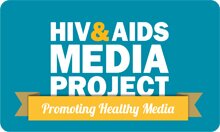Male circumcision
Circumcision generally involves the removal of the skin which covers the glans (head) of the penis. The procedure is performed for reasons which have to do with health and hygiene and/or with religious and cultural beliefs.
In South Africa These reasons usually correspond to the two different forms of male circumcision, medical male circumcision and traditional male circumcision respectively.
But this is changing as many parties push for the formal integration of MMC into traditional initiation rituals in order to minimise injuries and deaths resulting from botched traditional male circumcisions.
 Medical male circumcision ----MMC
Medical male circumcision ----MMC
Medical male circumcision (MMC) is where the foreskin is completely removed by medically trained personnel, according to surgical techniques and standards. Although MMC has been proved to offer up to 60 percent protection from HIV infection many people continue to be skeptical of its efficacy.
The efficacy of MMC should not be over-stated because men should know that there is still a risk of contracting HIV. MMC should therefore be a small part of a more comprehensive HIV prevention package.
MMC affords a measure of protection against HIV for several reasons;
- The delicate foreskin is more likely to tear during sex. These tears form pathways through which HIV can enter the body.
- The foreskin creates a warm and moist environment in which HIV thrives.
- When the foreskin is removed completely the top of the penis is exposed. Without the foreskin to protect it the once soft skin keritinises (hardens), forming a barrier against HIV.
MMC trials
Three landmark randomised clinical trials formed the basis for the WHO's formal endorsement of MMC as a method of HIV prevention through confirming that MMC reduced the risk of HIV infection by up to 60 percent.
The three studies were conducted in Orange Farm (SA, 2005), Kisumu (Kenya, 2007) and Raikai (Uganda, 2007).
These trials were conducted after over 35 observational studies suggested that circumcision could help curb the spread of HIV.
It is important to note that female circumcision (also referred to as 'female genital mutilation' (FGM) and the more neutral term 'female genital cutting') is not considered comparable to male circumcision.
While circumcision involves the removal of the foreskin (which if done in a sterile and hygienic environment according to medical guidelines has a very low risk of permanent injury), female genital cutting involves the injury of or partial or complete removal of the external female genitalia for non-medical reasons.
MMC has few ill effects and at most some men complain that the head of the penis is slightly less sensitive after circumcision. In contrast female genital cutting can greatly affect women and girls' quality of life and is therefore considered a violation of human rights.
Female genital cutting has a long list of medical complications which include infertility, recurring urinery tract and bladder infections, open sores in the genital region, problems with urination, and complications during childbrith which can result in infant death. The practice is also implicated in the oppression of women.
Unlike MMC, Female genital cutting offers no health benefits and no protection from HIV infection.
 Traditional male circumcision----TMC
Traditional male circumcision----TMC
South Africa’s winter months are labeled the circumcision season because thousands of young Xhosa boys ‘go to the mountain’ to be circumcised as part of the larger initiation ritual marking the transition from boy to man. Traditional male circumcision (TMC) is practiced by many ethnic groups throughout Africa.
The procedure is performed by a traditional nurse or surgeon with no medical training.
How much of the foreskin is removed varies between the different groups which practice TMC. This makes it difficult to say to what degree TMC might offer protection from HIV.
 Also see Our Myths and misconceptions section for details on male circumcision and HIV prevention.
Also see Our Myths and misconceptions section for details on male circumcision and HIV prevention.
Last updated: 19 December 2011








